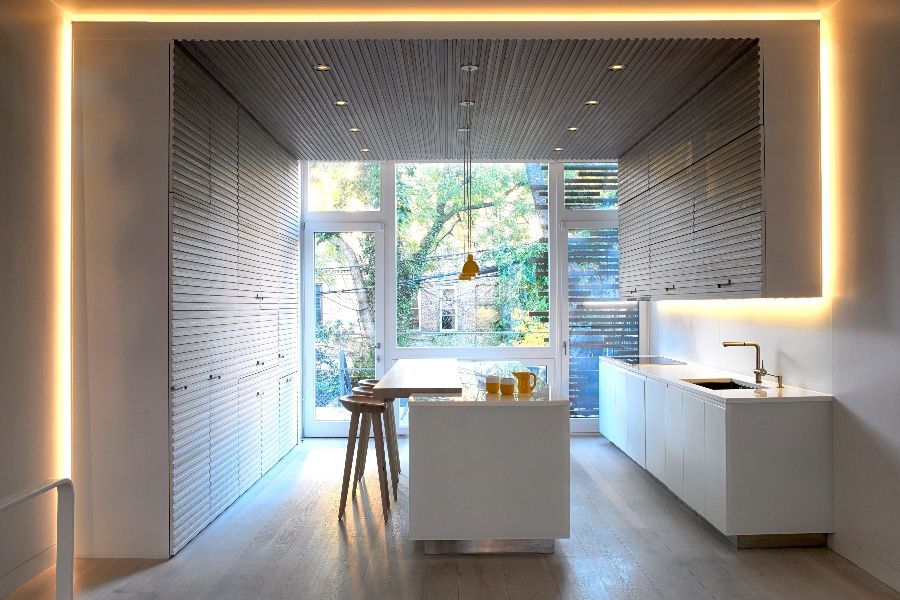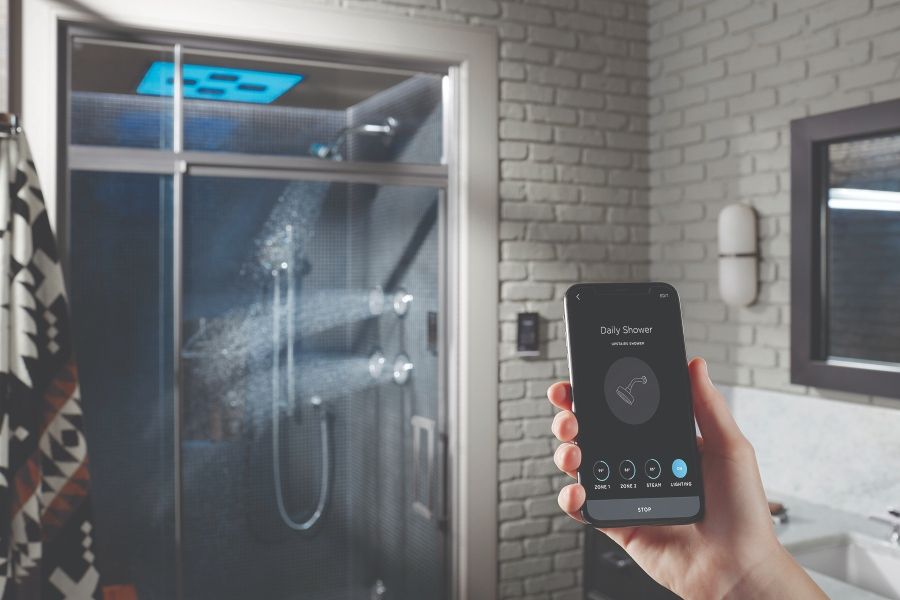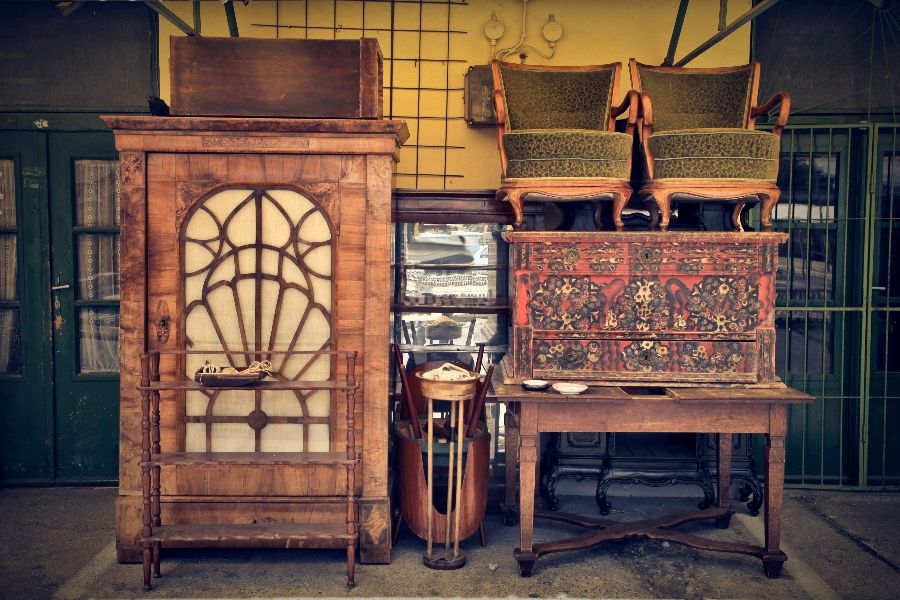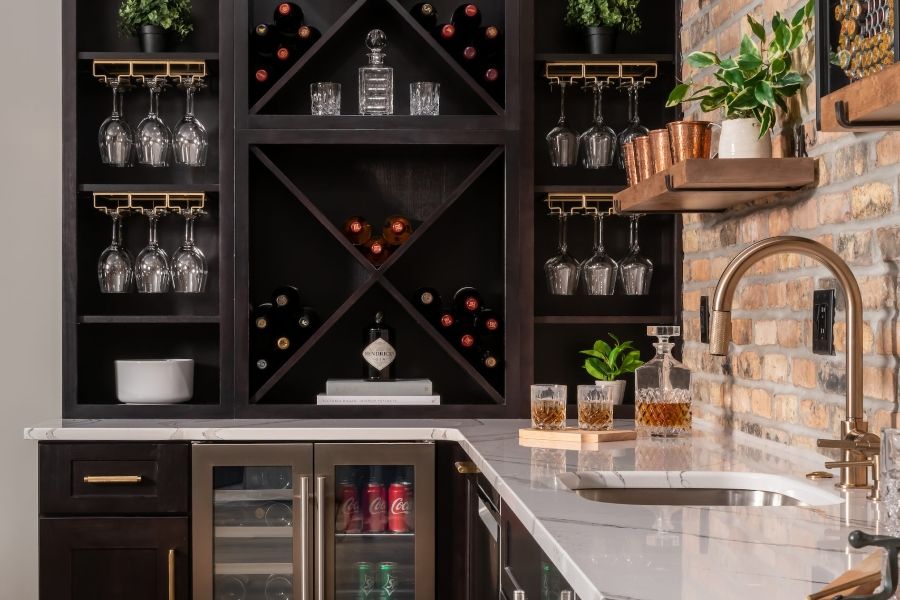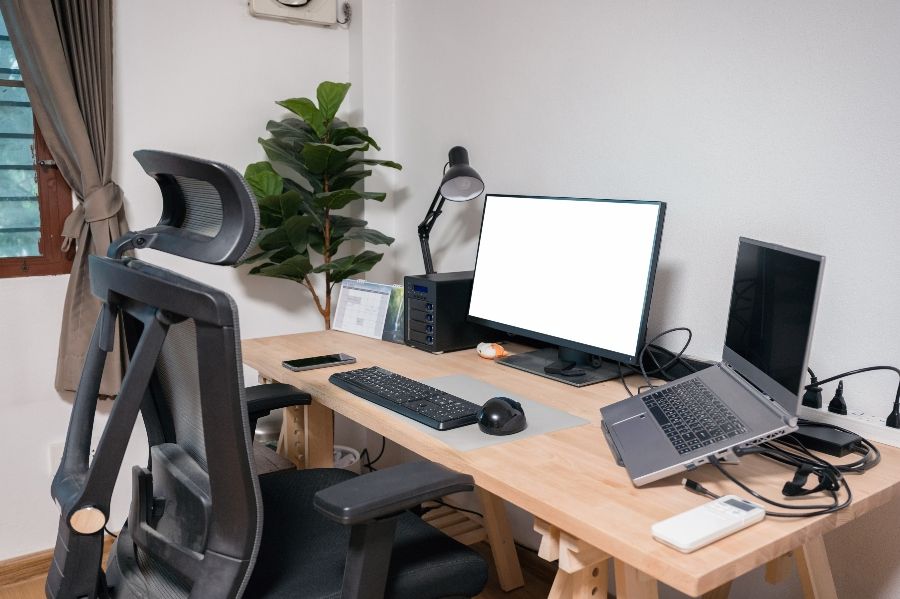Spring has taken root. Nature is beginning to open up and with it, the world world comes out of its long winter. The past two years have done dividends in teaching the world what an impact the interior space can have one’s personal health and wellbeing, and the opportunity to escape out into the natural world will see itself reflected in the wellness design trends of 2022.
In fact, these trends almost represent a maturing and tempering of ideals. As picturesque and enjoyable it would be to be outside all day, there are special affordances the interior environment provides. These trends represent a more nuanced and intimate approach to customization, a careful consideration for the limitations and opportunities within a home and most importantly a hearty respect for personal health and safety.

Biophilic design continues to be a driving force, though it goes well beyond plants now. (ribalka yuli/Adobe Stock)
Natural Inspiration, Natural Inclusion
The pandemic taught the world of its integral connection to nature. For those who had access, they were able to thrive, while those who were cut off had a harder time weathering shelter orders compared to the rest. Given that the pandemic has only increased many people’s interactions with the interior world, this demand for nature-inspired spaces will only continue to grow as time goes on.
Plants, living or otherwise, can be used to great effect to create regenerative, ecological oases. Unique, organic and textured material, such as cane, wool or even hemp, can provide an element of tactile engagement that can be just as beneficial as its visual counterparts. Increased access to sunlight and fresh air are both simple inclusions that can greatly improve physical and mental health for occupants.
While these elements can stand as their own themed spaces, the best results will come from having these individual touches woven throughout, adding to character, but not stealing away identity.

Purposeful, yet reserved, touches add a splash of creativity and expression. (Photographee.eu/Adobe Stock)
Expressive Simplicity
Not minimalism, not maximalism, this is a trend born out of the need for creative expression and the desire to reduce clutter. At the same time, a lack of travel over the past two years has led to more disposable income and a greater desire for people to express themselves elsewhere.
The answer for homeowners has been to target specific elements as vessels for creative and personal expressions. Something such as a unique throw rug, purposefully selected artworks or a strong color choice plays heavily into this new approach to decoration. At its core it is a deeply holistic approach to design that factors in the motives behind selections in addition to the selections themselves.

Surfaces that are anti-microbial and fingerprint resistant greatly reduce the need to clean. (Caesarstone)
Multifunctionality in Both Materials and Spaces
With more time spent in the home, another reality has become apparent: most do not have the luxury of space to have a room for every need. In addition, the pandemic saw the home needing to be used for even more than it was usually intended for (workspace, classroom, gym, etc.). This increased usage will see homeowners continuing to demand designs that are adaptable, flexible and most importantly, durable.
Low-maintenance elements are pivotal to these spaces, as they reduce the need for cleaning and upkeep that comes with greater usage. Utilitarian products with clean baked into their design like antimicrobial surfaces or self-cleaning sinks will be more highly valued than something like a UV disinfecting cabinet, where hygiene is treated more as an accessory.
Multifunctional storage spaces are perhaps the most highly valued of them all, with the mudroom gaining special prominence during these times. A cloister for dirt and grime, the modern-day mudroom has also evolved into a more liminal storage space, sequestering clutter and giving families a place to pause, decompress or gather between outings and returns.
Kitchen storage has likewise grown with the rise of the kitchen island offering more space. With kitchens themselves having become a common WFH space, the demand for multifunctional elements such as lighting, storage and seating will only continue to grow as homeowners and remote workers settle deeper into these patterns.

Tunable lighting allows entire environments from switch to day to night. (Global Wave Integration)
Wellness Technology
The rise of the smart home has been fed largely by the rising concern of comfort, convenience and wellness in the home. The technology itself has become more accessible, and the ease that DIY installations can be performed has attracted many homeowners to the market, however, there remains a significant gap between DIY offerings and professional solutions.
Minimizing touch, a core part in many hygiene rituals, has become a hugely popular piece of technology used throughout the built environment. Being lower maintenance and more convenient plays heavily into their popularity as well. While voice activation remains big for these reasons, too, there is a greater reluctance among homeowners to adopt the latter due to privacy concerns.
Lighting, meanwhile, has risen to greater prominence through chromatherapy and circadian lighting, especially when used in the bathroom. As greater awareness is spread about the role light can have in improving health and wellbeing, a greater demand is expected to follow.
In addition, with the ever-growing litany of air quality studies contributing to greater awareness and therefore greater demand, solutions geared towards air quality improvements have become mainstays in the home. Technologies like air quality monitors specifically are becoming more and more integral to create more holistic solutions that provide a more affordable answer to otherwise costly upgrades.
The approach to audio, too, may soon change as people adopt fitness, meditation and other wellness routines into their lives. Rather than having singular rooms with massive, dedicated audio systems, more and more homeowners are looking for more subtle units that can be spread throughout an entire home, allowing them to have access to music at any time for their needs.

Backyards open up into greater accommodations for hosting. (Jamie Hooper/Adobe Stock)
Outdoor Lifestyles
For those that do have private, outdoor spaces, the desire to branch out their lives into these spaces has become even greater as the pandemic has worn on. Providing closer access to nature, better air, more natural lighting and an alternative to cramped, indoor spaces for gatherings, outdoor spaces provide an answer to many of the above trends.
As a gathering space, these locations need to be adapted with technology and high durability furniture playing their parts respectively. The greater use of outdoor spaces can be expected to lead to more widespread adoption of technology like outdoor lighting, enhanced sound systems and outdoor AV setups as well as motorized shading that allows one to quickly open and shutter patios to adapt to insects, storms and off-seasons.
The importance of landscaping cannot be understated here. In deepening a connection with nature, professional knowledge regarding native plant species, bird and insect attractors and privacy-forward species will only grow in demand as the need for an interior designer has grown indoors.

